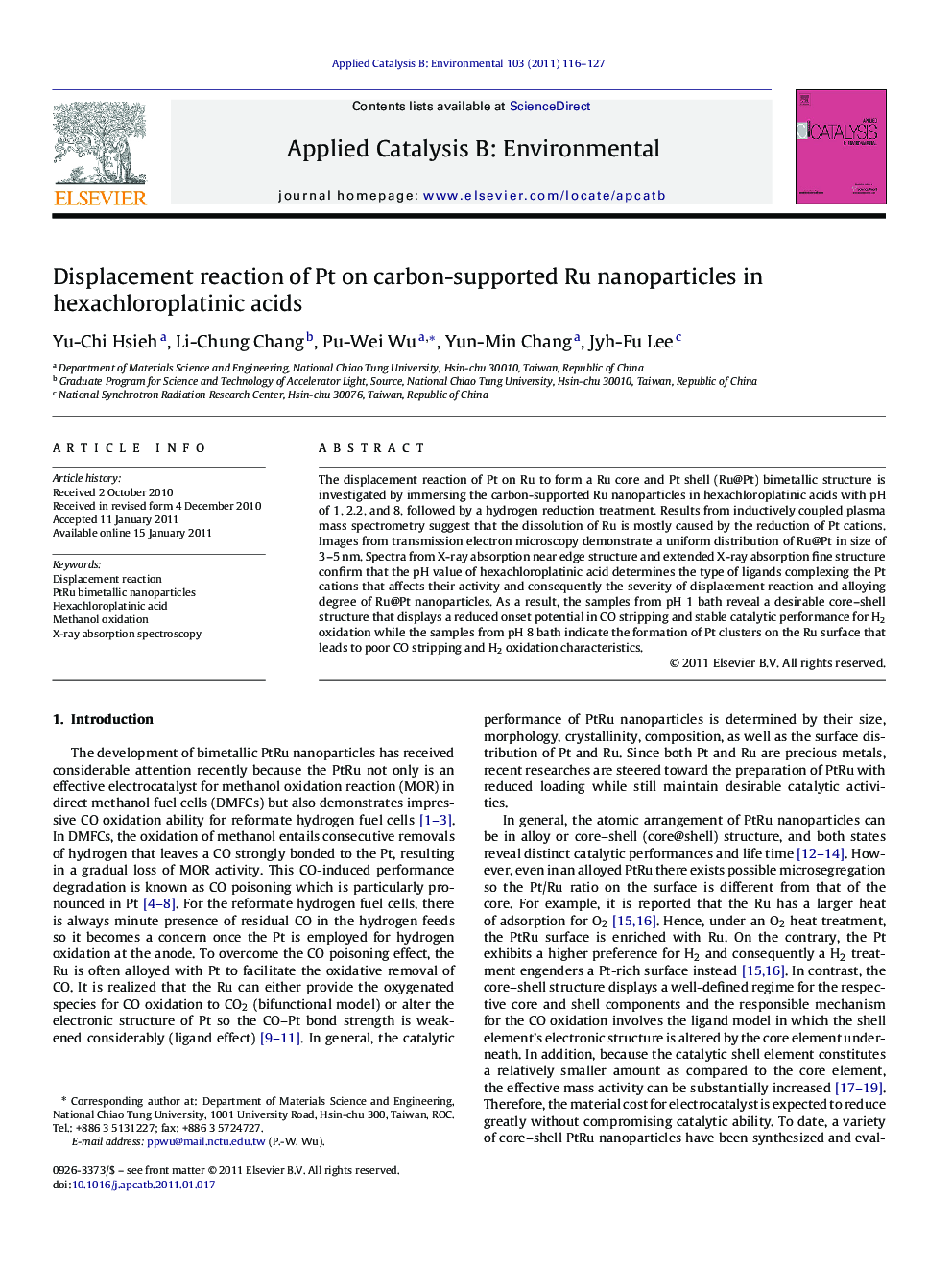| Article ID | Journal | Published Year | Pages | File Type |
|---|---|---|---|---|
| 47000 | Applied Catalysis B: Environmental | 2011 | 12 Pages |
The displacement reaction of Pt on Ru to form a Ru core and Pt shell (Ru@Pt) bimetallic structure is investigated by immersing the carbon-supported Ru nanoparticles in hexachloroplatinic acids with pH of 1, 2.2, and 8, followed by a hydrogen reduction treatment. Results from inductively coupled plasma mass spectrometry suggest that the dissolution of Ru is mostly caused by the reduction of Pt cations. Images from transmission electron microscopy demonstrate a uniform distribution of Ru@Pt in size of 3–5 nm. Spectra from X-ray absorption near edge structure and extended X-ray absorption fine structure confirm that the pH value of hexachloroplatinic acid determines the type of ligands complexing the Pt cations that affects their activity and consequently the severity of displacement reaction and alloying degree of Ru@Pt nanoparticles. As a result, the samples from pH 1 bath reveal a desirable core–shell structure that displays a reduced onset potential in CO stripping and stable catalytic performance for H2 oxidation while the samples from pH 8 bath indicate the formation of Pt clusters on the Ru surface that leads to poor CO stripping and H2 oxidation characteristics.
Graphical abstractFigure optionsDownload full-size imageDownload as PowerPoint slideResearch highlights▶ Displacement reaction of Pt on Ru nanoparticles to form PtRu nanoparticles. ▶ Adjusting the pH value of hexachloroplatinic acids affects the extent of displacement reaction. ▶ X-ray absorption spectroscopy provides structural determination on PtRu formation. ▶ CO stripping and H2 oxidation confirm desirable PtRu structure.
